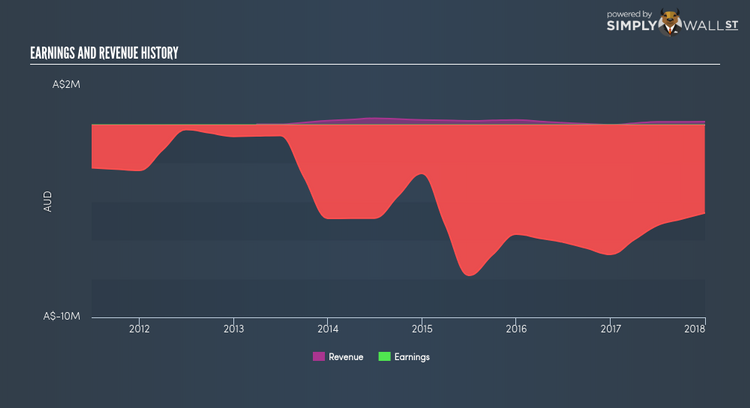Has Musgrave Minerals Limited (ASX:MGV) Improved Earnings Growth In Recent Times?

After reading Musgrave Minerals Limited’s (ASX:MGV) latest earnings update (31 December 2017), I found it beneficial to look back at how the company has performed in the past and compare this against the most recent numbers. As a long-term investor I tend to pay attention to earnings trend, rather than a single number at one point in time. I also like to compare against an industry benchmark to understand whether MGV has outperformed, or whether it is simply riding an industry wave. Below is a brief commentary on my key takeaways. View our latest analysis for Musgrave Minerals
Could MGV beat the long-term trend and outperform its industry?
I use data from the most recent 12 months, which annualizes the most recent half-year data, or in some cases, the latest annual report is already the most recent financial year data. This blend allows me to analyze various companies on a more comparable basis, using new information. For Musgrave Minerals, its latest earnings (trailing twelve month) is -AU$4.59M, which compared to the previous year’s figure, has become less negative. Given that these figures are relatively nearsighted, I’ve created an annualized five-year figure for MGV’s net income, which stands at -AU$3.92M. This shows that, Musgrave Minerals has historically performed better than recently, while it seems like earnings are now heading back in the right direction again.
We can further examine Musgrave Minerals’s loss by looking at what the industry has been experiencing over the past few years. Each year, for the last five years Musgrave Minerals has seen an annual decline in revenue of -8.00%, on average. This adverse movement is a driver of the company’s inability to reach breakeven. Has the entire industry experienced this headwind? Viewing growth from a sector-level, the Australian metals and mining industry has been growing its average earnings by double-digit 18.18% over the past year, and a more subdued 8.68% over the past half a decade. This means that, even though Musgrave Minerals is currently running a loss, it may have gained from industry tailwinds, moving earnings into a more favorable position.
What does this mean?
Musgrave Minerals’s track record can be a valuable insight into its earnings performance, but it certainly doesn’t tell the whole story. With companies that are currently loss-making, it is always difficult to predict what will happen in the future and when. The most insightful step is to examine company-specific issues Musgrave Minerals may be facing and whether management guidance has dependably been met in the past. You should continue to research Musgrave Minerals to get a better picture of the stock by looking at:
Financial Health: Is MGV’s operations financially sustainable? Balance sheets can be hard to analyze, which is why we’ve done it for you. Check out our financial health checks here.
Other High-Performing Stocks: Are there other stocks that provide better prospects with proven track records? Explore our free list of these great stocks here.
NB: Figures in this article are calculated using data from the trailing twelve months from 31 December 2017. This may not be consistent with full year annual report figures.
To help readers see pass the short term volatility of the financial market, we aim to bring you a long-term focused research analysis purely driven by fundamental data. Note that our analysis does not factor in the latest price sensitive company announcements.
The author is an independent contributor and at the time of publication had no position in the stocks mentioned.

 Yahoo Finance
Yahoo Finance 
